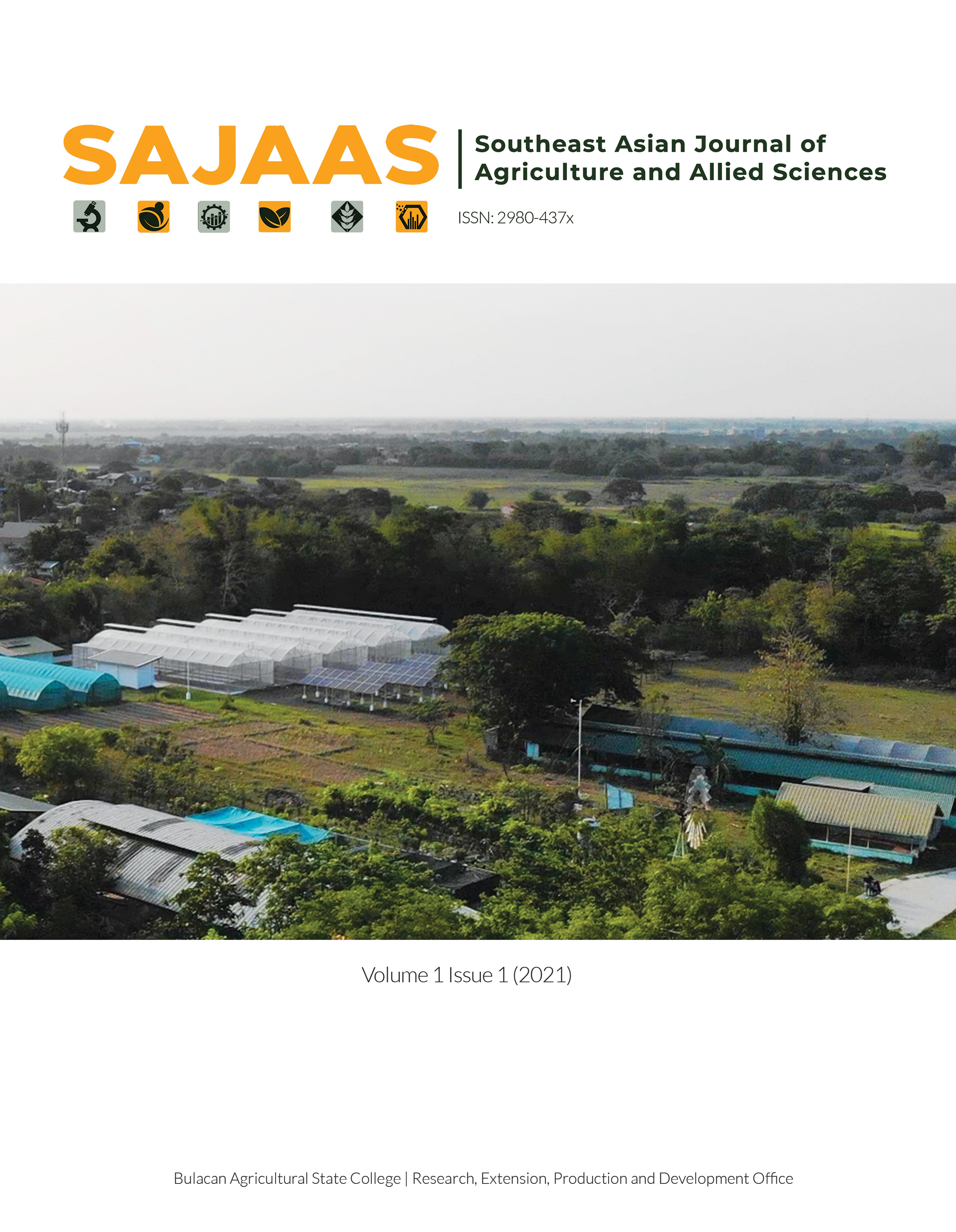Abstract
To evaluate the production performance of male and female mallard ducks fed soybean curd residue as a partial replacement for soybean meal, a study was conducted from April 6, 2020, to June 6, 2020, at Buhol na Mangga, San Ildefonso, Bulacan. One hundred eighty mallard ducks (90 male and 90 female) were used in the study with a two-factor factorial experiment in Completely Randomized Design (CRD). Factor A was the level of substitution (basal feeds formulated duck starter/grower feeds, soybean curd residue as 15% replacement for soybean meal in formulated duck starter/grower feeds and soybean curd residue as 20% replacement for soybean meal in formulated duck starter/grower feeds) while factor B was the sex of the mallard ducks. The performance of mallard ducks in terms of final weight, weight gain, average feed consumption, feed conversion ratio, dressing percentage, and visceral organs weight both at 15% and 20% inclusion rates of soybean curd residue (SCR) for starter and grower rations are similar to the animals fed of soybean meal. There is a considerable rise, however, in the carcass weight in terms of the sex of the mallard ducks raised. The use of soybean curd residue (SCR) as substitute to soybean meal (SBM) is more profitable for farmers since it reduces the production cost of raising mallard ducks. Conclusively, soybean curd residue is reasonable to use as a substitute for soybean meal.
References
Boos, M., Zorn, T., Le Maho, Y., Groscolas, R & J-P. Robin. (2002). Sex differences in body composition of wintering Mallards (Anasplatyrhynchos): possible implications for survival and reproductive performance, Bird Study, 49:3, 212- 218, DOI: 10.1080/00063650209461268
Chang, H.S.; Dagaas, C.T. (2004). The Philippine Duck Industry: Issues and Research Needs. University of New England Graduate School of Agricultural and Resource Economics & School of Economics
Enicola, E. (2008). Soybeans in the Philippines March 7, 2019 1:30pm (Philsoybeans.blogspot.com)
Kim K.H. (2012). Effects of dietary soybean curd residue on the growth performance and carcass characteristics in Hanwoo (Bostauruscoreanae) Steer.URL:http:// www. scielo. br/ pdf/ pab/v49n7/ 0100-204X-pab-49-07-00554.pdf.
Li, SH.; Zhu, D.; Li, KJ.; Yang, Y.; Lei, ZF.; Zhang, Z. (2013). Soybean curd residue: composition, utilization, and related limiting factors. Graduate School of Life and Environmental Sciences, University of Tsukuba,1-11Tennodai, Tsukuba, Ibaraki 305- 8572, Japan
Philippine Statistics Authority. (2022). Duck Situation Report. In https://psa.gov.ph/content/duck-situation-report (ISSN : 2546-0625). Retrieved September 5, 2022, from https://psa.gov.ph/content/duck-situation-report
Philippine Society of Animal Nutritionists. (2010). Feed Reference Standards. 4th ed. Philippine Society Animal Nutritionist, Manila, Philippines.
Sicat, S., & Buo, M. T. (Eds.). (2018, March 17). Soybean – bpidagovphbpidagovphbpiimages Production_guideWord Web view. The plant grows up to 15 meters. dokumen.tips. Retrieved September 5, 2022, from https://dokumen.tips/ documents/soybean-bpidagovphbpidagovphbpiimagesproductionguideword-viewthe-plant.html ?page=1

This work is licensed under a Creative Commons Attribution-NonCommercial-ShareAlike 4.0 International License.
Copyright (c) 2022 Southeast Asian Journal of Agriculture and Allied Sciences

